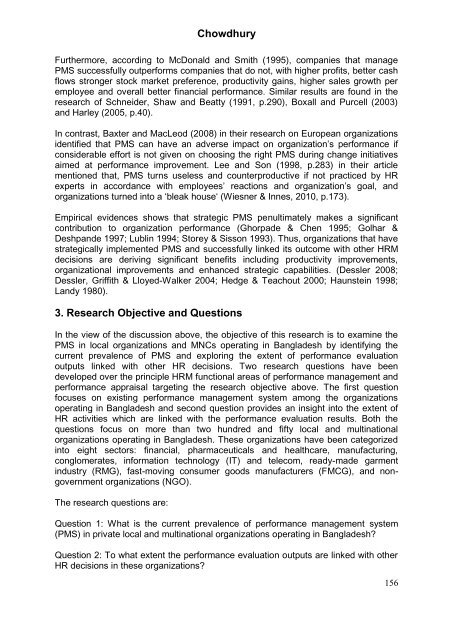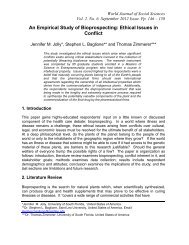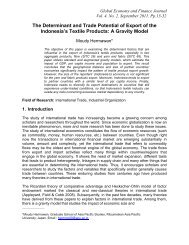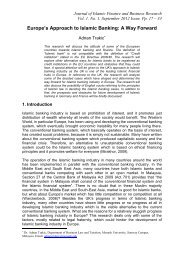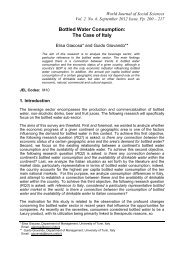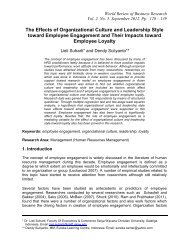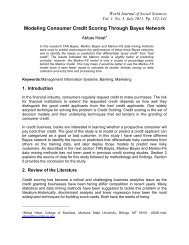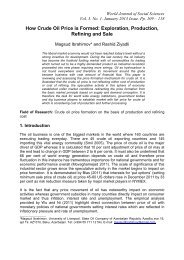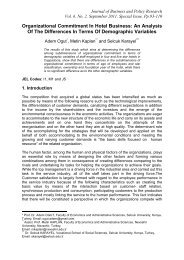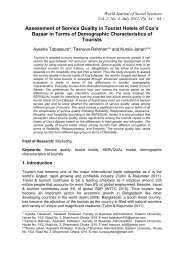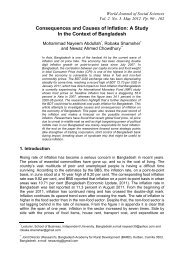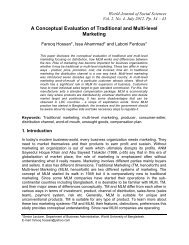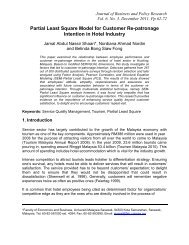Muhammad Faisol Chowdhury - Wbiaus.org
Muhammad Faisol Chowdhury - Wbiaus.org
Muhammad Faisol Chowdhury - Wbiaus.org
Create successful ePaper yourself
Turn your PDF publications into a flip-book with our unique Google optimized e-Paper software.
<strong>Chowdhury</strong>Furthermore, according to McDonald and Smith (1995), companies that managePMS successfully outperforms companies that do not, with higher profits, better cashflows stronger stock market preference, productivity gains, higher sales growth peremployee and overall better financial performance. Similar results are found in theresearch of Schneider, Shaw and Beatty (1991, p.290), Boxall and Purcell (2003)and Harley (2005, p.40).In contrast, Baxter and MacLeod (2008) in their research on European <strong>org</strong>anizationsidentified that PMS can have an adverse impact on <strong>org</strong>anization‟s performance ifconsiderable effort is not given on choosing the right PMS during change initiativesaimed at performance improvement. Lee and Son (1998, p.283) in their articlementioned that, PMS turns useless and counterproductive if not practiced by HRexperts in accordance with employees‟ reactions and <strong>org</strong>anization‟s goal, and<strong>org</strong>anizations turned into a „bleak house„ (Wiesner & Innes, 2010, p.173).Empirical evidences shows that strategic PMS penultimately makes a significantcontribution to <strong>org</strong>anization performance (Ghorpade & Chen 1995; Golhar &Deshpande 1997; Lublin 1994; Storey & Sisson 1993). Thus, <strong>org</strong>anizations that havestrategically implemented PMS and successfully linked its outcome with other HRMdecisions are deriving significant benefits including productivity improvements,<strong>org</strong>anizational improvements and enhanced strategic capabilities. (Dessler 2008;Dessler, Griffith & Lloyed-Walker 2004; Hedge & Teachout 2000; Haunstein 1998;Landy 1980).3. Research Objective and QuestionsIn the view of the discussion above, the objective of this research is to examine thePMS in local <strong>org</strong>anizations and MNCs operating in Bangladesh by identifying thecurrent prevalence of PMS and exploring the extent of performance evaluationoutputs linked with other HR decisions. Two research questions have beendeveloped over the principle HRM functional areas of performance management andperformance appraisal targeting the research objective above. The first questionfocuses on existing performance management system among the <strong>org</strong>anizationsoperating in Bangladesh and second question provides an insight into the extent ofHR activities which are linked with the performance evaluation results. Both thequestions focus on more than two hundred and fifty local and multinational<strong>org</strong>anizations operating in Bangladesh. These <strong>org</strong>anizations have been categorizedinto eight sectors: financial, pharmaceuticals and healthcare, manufacturing,conglomerates, information technology (IT) and telecom, ready-made garmentindustry (RMG), fast-moving consumer goods manufacturers (FMCG), and nongovernment<strong>org</strong>anizations (NGO).The research questions are:Question 1: What is the current prevalence of performance management system(PMS) in private local and multinational <strong>org</strong>anizations operating in Bangladesh?Question 2: To what extent the performance evaluation outputs are linked with otherHR decisions in these <strong>org</strong>anizations?156


